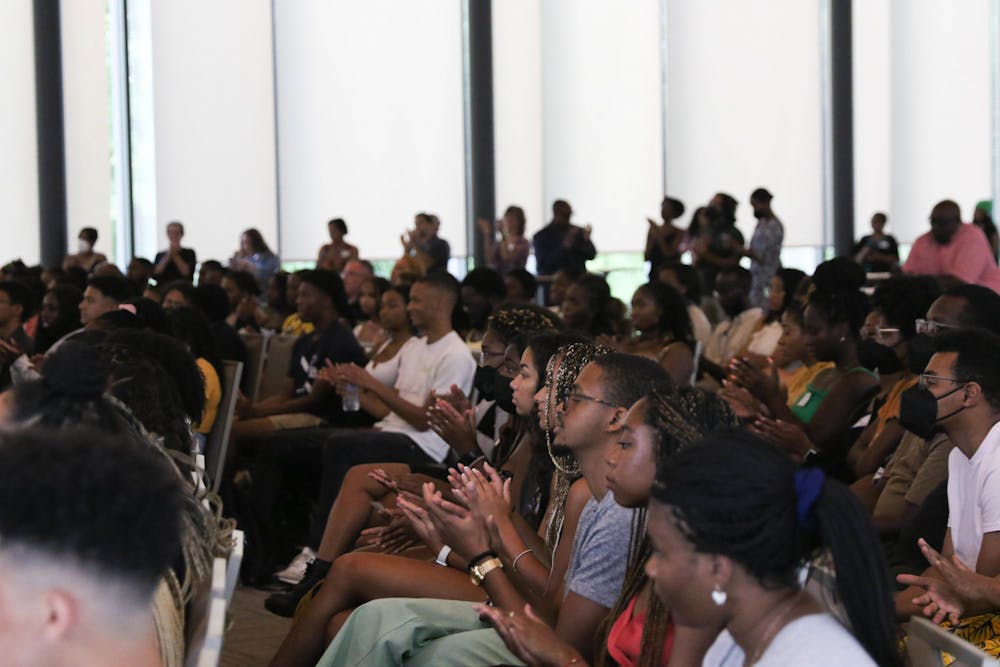On Monday, Black students gathered at Penn Pavilion to celebrate Duke’s eighth annual Black Convocation, which was combined for the first time with the Welcome Reception, which is in its 29th year.
Hosted by the Mary Lou Williams Center for Black Culture and Center for Multicultural Affairs, the program celebrated the start of a new school year and served as a welcome for first-years to the Black community at Duke.
The program consisted of a collection of speeches including a keynote from Corey Pilson, Trinity ‘20, and a poetry performance by Takudzwa Chikepe, a second-year student at the Divinity School. Faculty, staff and students gathered to chat, network and “grow their village.”
Following a live vocal and percussion performance by the Sankofa Musical Group, Linda Capers, director of the Center for Multicultural Affairs, welcomed attendees. Before the pandemic, each center would hold separate events, with the reception in August and Convocation in September, Capers said.
“Today’s convocation and reception represents what a community-inspired collaboration can look like,” Capers said.
Following her speech, a group of “university connectors” and prominent Duke professionals gave speeches to the audience. A. Eugene Washington, CEO of the Duke University Health System and the chancellor for health affairs, exchanged greetings with attendees in a call-and-response format, reminding students of the opportunities present for networking and connection.
“While it may seem difficult to connect with a big enterprise like ours, I encourage you to take advantage of my invitation to have you reach out to me, and I'll be your portal, connecting you with individuals that you might want to have counsel with,” Washington said.
Pilson emphasized the strength of community at Duke.
“You are not experiencing Duke alone ... The community that we want and need is built with the intentional and consistent choices of individuals,” Pilson said.
He spoke about the importance of remaining involved and connected within the Black network, and not thinking of it as a “faraway house.” Pilson reminded students that they should cherish and celebrate organizations like the CMA and Mary Lou.
The event ended with a presentation of the Sankofa, a statue of a western African symbol of a bird with its neck reaching behind itself.
“The Sankofa Bird and the concept of Sankofa itself translates to ‘not being taboo to go back and get what you forgot,’” Quinton Smith, associate director of the Mary Lou, said. “Here, it frequently symbolizes the necessity of reaching into the past to honor our ancestors, empower ourselves through history and learn how to move forward.”
Get The Chronicle straight to your inbox
Signup for our weekly newsletter. Cancel at any time.
Ethan Niang is a Trinity sophomore and senior reporter of The Chronicle's 118th volume.

